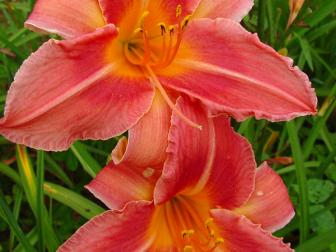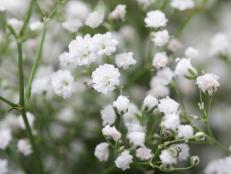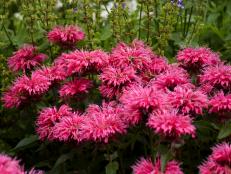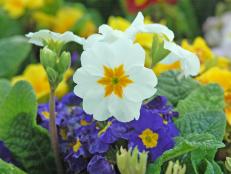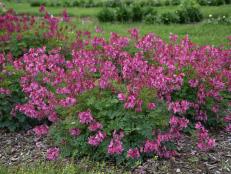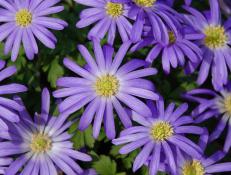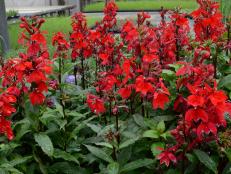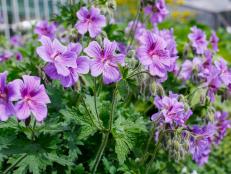How to Plant and Grow Balloon Flower
The easy-to-grow, old-fashioned balloon flower brings showy blooms to the late summer garden.

Balloon flowers get their name from their buds, which look like little hot air balloons before they open into star-shaped flowers of blue, pink or white. Don't let the delicate-sounding name fool you, though. Balloon flowers are tough plants that need little help from you to thrive.
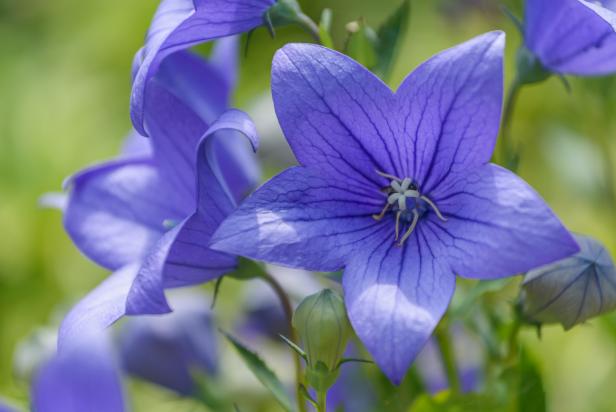
Shutterstock/Deep Green
They're hardy perennials that will grow in sun to partial shade. They're long-lived, don't need to be divided and are resistant to diseases and becoming dinner for a deer. Birds, bees and butterflies love them, so a patch of balloon flowers will draw wildlife to your garden.
Perennials That Bloom in Summer 15 Photos
Combine the perennials that are right for your garden and enjoy easy color all summer long.
Balloon flowers are native to China, Japan, Korea and Siberia, where for centuries they've been used for culinary and medicinal purposes. You can find dried balloon roots in the produce aisle at Asian grocery stores. But most people grow balloon flowers as an ornamental.
Botanical Name: Platycodon grandiflorus
Common Names: Balloon flower, Chinese bellflower
Hardiness Zones: 3 to 9
Bloom Time: Summer
Planting Balloon Flowers
- You can start with plants or seed, but know that seed-grown plants won't bloom until their second year of existence.
- If you grow from seed, start the plants indoors in early spring. Their seeds are so hard-shelled that you'll need to crack the seed to encourage it to sprout, a process called scarification.
- Whether you transplant your seedlings or go with starter plants from a nursery, place them in a sunny spot in the garden. They'll grow in partial shade, but you'll get the most flowers if the plant gets eight or more hours of sun a day.
- Balloon flowers prefer well-drained, loamy soil that's slightly acidic.
Growing and Caring for Balloon Flowers
- Deadhead the old blooms to keep the plant blooming.
- You may need to stake tall plants to keep them from flopping over under the weight of their blooms.
- Balloon flowers like moderate temperatures in the range of 60 to 80 degrees Fahrenheit. If you live in a hotter climate, be sure they get afternoon shade.
- Balloon flowers can stand up to humidity without succumbing to mildew or fungus.
- Once established, balloon flowers won't need a lot of water from you. They can handle short dry spells.
- Fertilize them in the spring, before they bloom.
- Work compost into the soil around their roots in the fall to replenish them after a season of growth.
- Pinch back plants when they are about 6 inches tall so they'll grow into stocky, sturdy plants.
Propagation
- Balloon flowers have a long taproot and don't like to be transplanted, so this isn't a great plant to divide and share.
- If you do divide them, don't dig up the whole plant. Instead, slice off a piece of it with a knife, taking care to get a piece of the root. Pot it up, and expect the plant to take one or two seasons to bloom again.
Pests and Problems
- Balloon flowers are pest- and disease-resistant, but root rot can get them if they're grown in soil that's too wet.
- Slugs and snails find balloon flowers tasty, so keep an eye out for them.
Recommended Varieties of Balloon Flowers
- Astra series have double flowers in blue, pink or white.
- Fuji series are the most common varieties sold in nurseries. They're the tallest, too, reaching heights of 30 inches with flowers in blue, pink or white.
- 'Komachi' has purple-blue flowers that look like little pillows.
- 'Sentimental Blue' is a dwarf variety that grows 6 inches tall with scads of purple flowers.
- 'Shell Pink' has light pink flowers and grows to 24 inches tall.
- Sentimental series is a compact variety that grows 9 inches tall and produces blue or white flowers.
Garden Uses
- Blue balloon flowers look lovely with the pale yellows of lilies and yarrow.
- Pink and white balloon flowers pair nicely with ornamental grasses and spiky plants like celosia, liatris and yucca.
- Plant them in mixed borders and rock gardens.






